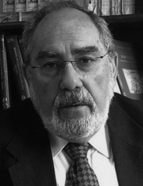

Trained under the influence of the great French historiography of the Annales School, attentive to the concepts and methodological resources of various social sciences, but averse to sociologisms, Romero Magalhães understood the archive and the archivist as agents of mediation between the historian and public institutions. This explains his love of libraries and archives and his concern for the Library of the Faculdade de Economia da Universidade de Coimbra [School of Economics of the University of Coimbra], where much of his bibliographic collection is housed, as well as for the Municipal Archive of Loulé, which was named after him in April 2021 in a posthumous tribute.
A bibliophile historian and humanist, he imagined historiographical problems and constructed research ideas based on his reading of ancient pamphlets, leaflets, travel narratives, speeches, memoirs and other printed sources. This daily practice, not only of research but also of teaching, formed the basis of his working method, a persistent and demanding craft. A research historian, he combined archival mastery with a tremendous intuition for analysing the contexts of human action and the contingency of historical processes in his time. Attentive to the nature of spaces and the interplay of powers, he easily combined Fernand Braudel’s longue durée with other times and scales in order to explain the relationships between action and the environment. There are several Braudelian traits in Romero Magalhães’ historiography, but one of them is particularly salient in several of his publications: time is also geographical, history includes multiple temporalities that intersect and require a search for dialectics of globality – explanatory sets and subsets. To bring these intricate pictures of human and institutional action to life, he used his narrative imagination and his fluent writing and literary style.
This work is financed by national funds through FCT - Foundation for Science and Technology, I.P, in the scope of the projects UIDB/04311/2020 and UIDP/04311/2020.
